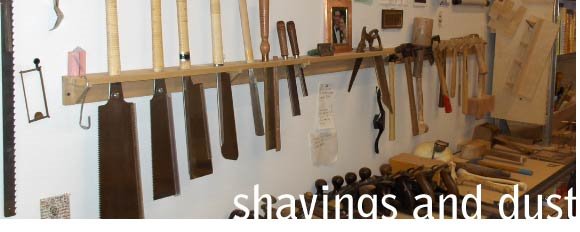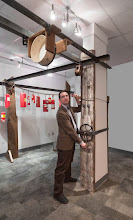there is a project on the bench these days that I am not ready to write about yet, but that has gotten me thinking about ornament. I waffle a lot when it comes to ornament, specifically about two issues, I think: What is “ornament,” and what is “function?”
The second question maybe needs to be addressed first as I think of my work as being “function-based” design. That is to say, that I eschew adding elements that are not in some way dictated by the structural needs of the object. Certainly structural needs are one compelling mandate, but there are other aspects that dictate functional needs, and that can influence the finished form.
In the current project, there are aspects that have no structural function, so they led me to question the “functionality” of them at all, and their necessity within the overall piece. In the recurring “form v. function” debate, I tend to think that form and function are like the chocolate and vanilla in a marbled cupcake, that they can not be separated in any meaningful way, that in the best design work there is nothing that one could remove that would not be sorely missed in the remaining piece.
There are, however, functions beyond the purely structural. As I was contemplating these panels and their place in the overall piece, I thought of the bed I made a few years ago and the oak branch that I found on the forest floor that became the lamp-post/headboard:
There are of course a variety of ways I could have kept that corner of the bed off the ground, and there are other ways to solve the need for a reading light. The structural functionality of the base of the oak branch as a leg of the bed or of the rest of the oak branch as a lamp-post are important, but the necessity of introducing an element that had the æsthetic function of providing relief from the relentless straightness of the machined planes is just as important, making the æsthetic choice a choice about functionality as well. Which brings us back to the first question, the question about ornament.
“Ornament” is a dirty word to a lot of designers that I greatly admire. Often it is to me as well. The idea of creating something that is ornamental not an appealing one, and often when I look at heavily ornamented structures or objects I feel that though I may admire the maker I do not want to live with that object or in that structure. That being said, there are of course ways to make necessary structures ornamental. To say the same thing coming at it form the other direction, there are ways to see the inherent beauty in the structure of an object. Japanese hand-laid "washi" paper is a good example of this:
The structure of this paper, that is to say the fibers that are the paper, can be presented as we are used to seeing them in a sketchbook; homogenized and bleached to the point that they appear as one solid sheet ready for the mark of a pencil. But in the paper shown above the fibers are not homogenized like that. They are allowed to have their own life by the maker, they have a voice and an identity. Though decorative, in a way, they do not strike me as ornamental. And they are integral to the paper, they in fact are the paper.
It is this parsing of the line where æsthetic function becomes ornament that I have been thinking a lot about lately. As I make the objects I make, as I develop my teaching, I am navigating the murky waters of ornament and trying to figure out what it is that really resonates, what it is that really needs to be there. I have also been re-thinking whether, in a basic sense, ornament is, in fact, a bad thing.
Because this is really about asking questions about my own life, of course. What needs to be here? What are the things that are (for lack of a better word) “structural” and what is “ornament?” What in terms of emotional and intellectual and physical needs must remain, and what can I strip down, strip away? As I build my life and the life of my family, are there things that are ornamental, and if there are is that okay? And what are the structural needs? Are there moments where emotional ornament is actually structural? And are there ways that I can make the emotionally structural necessities ornamental?




No comments:
Post a Comment